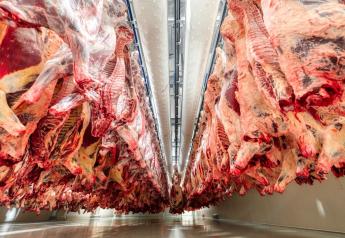New Year, Same Issue

As we enter a new year and a new decade, antibiotic stewardship remains on the top of issues affecting food-animal veterinarians. Continued public pressure, along with regulatory actions, will drive ongoing change, with more emphasis on preventive care and more veterinarian oversight of antibiotic use.
In September 2019, FDA released draft guidance for industry (GFI) 263, outlining a process for bringing remaining approved animal drugs containing antimicrobials of human medical importance under the oversight of licensed veterinarians, changing the approved marketing status from over-the-counter (OTC) to prescription (Rx). This would include dosage forms such as injectable or intra-mammary antibiotic products now available OTC.
The action builds on the earlier GFI 213, which eliminated performance claims from labels for medically important antibiotics and brought purchase of most medicated feeds under the Veterinary Feed Directive (VFD).
Also, by September 2020, FDA plans to issue a draft strategy to ensure that all medically important antimicrobial drugs used in the feed or drinking water of food-producing animals have an appropriately targeted duration of use.
While the industry has made progress in antibiotic stewardship, research shows ample opportunity for further improvement, especially in the eyes of skeptical consumers.
The CDC’s 2019 Antibiotic Resistance Threats Report for example, shows an 18% reduction in annual antibiotic-resistance (AR) associated deaths since 2013. Even so, the report notes AR bacteria and fungi cause more than 2.8 million infections and 35,000 deaths in the United States each year.
In December, the FDA released its 2018 Summary Report on Antimicrobials Sold or Distributed for Use in Food-Producing Animals, which showed domestic sales and distribution of medically important antimicrobials increased 9% between 2017 and 2018. Activists and consumer media focused their attention on the increase, even though 2018 is the second-lowest year on record, while 2017 was the lowest. Sales in 2018 were down 21 percent since 2009, the first year of reporting, and down 38 percent since 2015, the peak year of sales and distribution.
While the report does not evaluate reasons behind the year-to-year increase, it seems plausible that 2018 brought a correction or readjustment following a major disruption. Implementation of the VFD rule in 2017 undoubtedly reduced sales, possibly below the “natural” demand level, because of unfamiliarity with the rule and VFD process among producers and veterinarians. Also, sales during 2016 likely reflect effects of some producers stockpiling products ahead of the new rules, making the 2017 decline more dramatic. Sales of tetracyclines accounted for much of the increase from 2017 to 2018, further indicating that comfort with the VFD rules returned some lost demand to the market.
Nevertheless, activists and consumers see the increase and perceive the industry is moving in the wrong direction. Looking ahead, we’ll need to practice and publicize efforts to improve antibiotic stewardship while protecting animal health, welfare, food safety and producer profitability. Veterinarians are best qualified and positioned to address these challenges, and I believe you can make it happen.
For more on this issue, see these articles from BovineVetOnline:
Antimicrobial Sales Post Moderate Increase in 2018
NARMS Releases Latest Report on Antimicrobial Resistance Trends
Good and Bad News in CDC’s 2019 Antibiotic Resistance Threats Report
Princeton Study: Antibiotic Resistance Increasing Globally
FDA Releases Draft GFI to End OTC Sales of Most Animal Antibiotics







